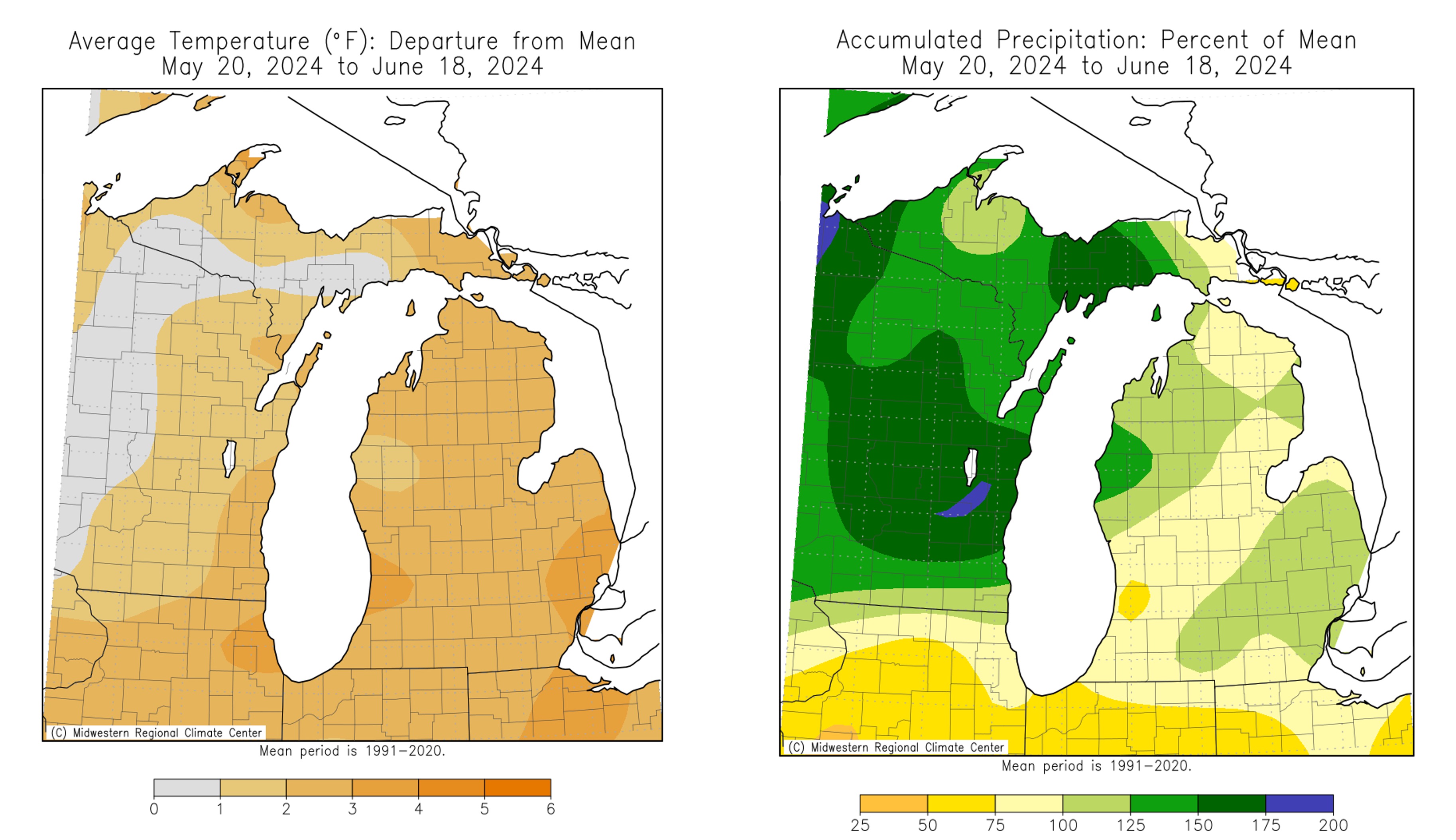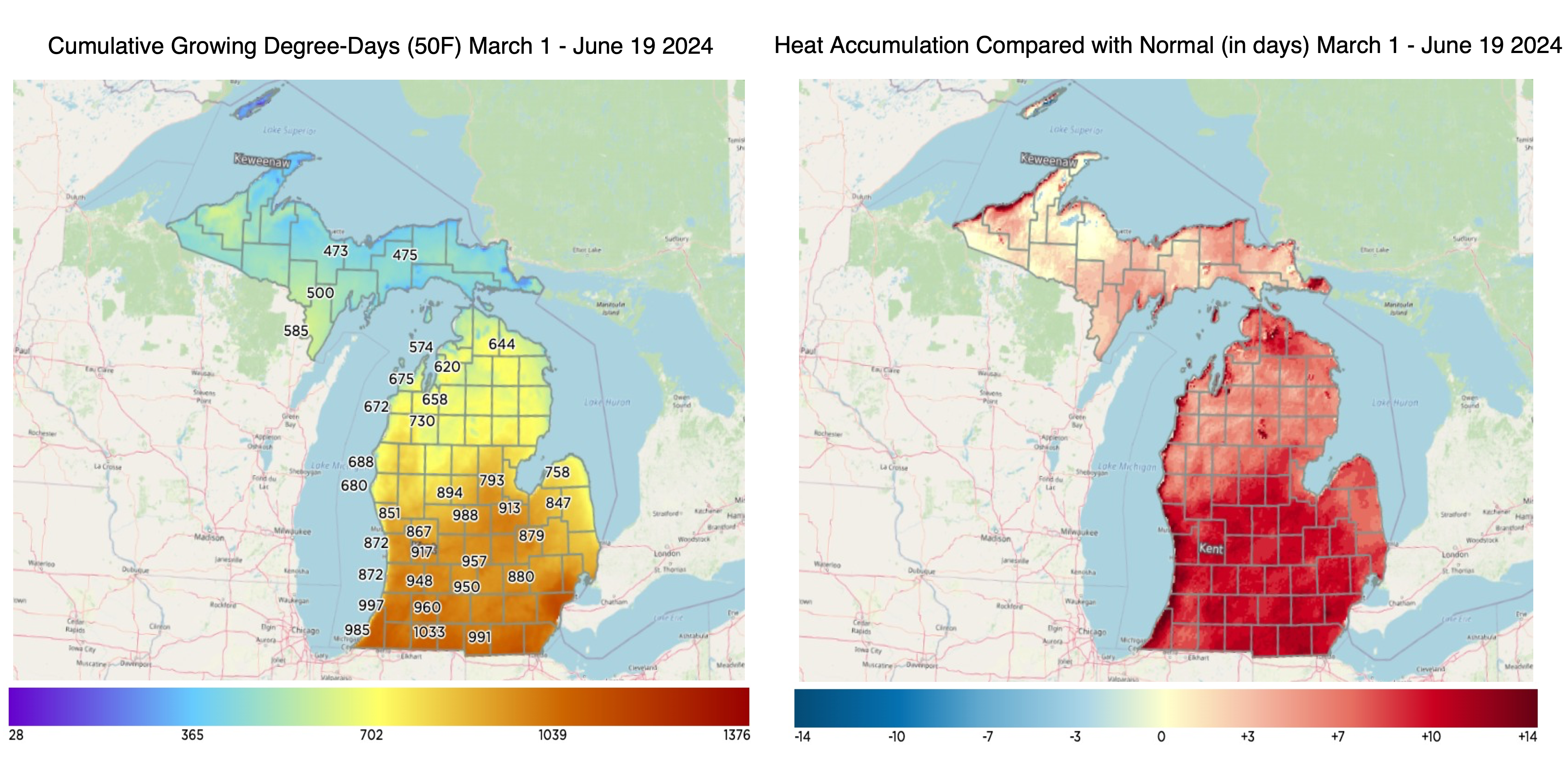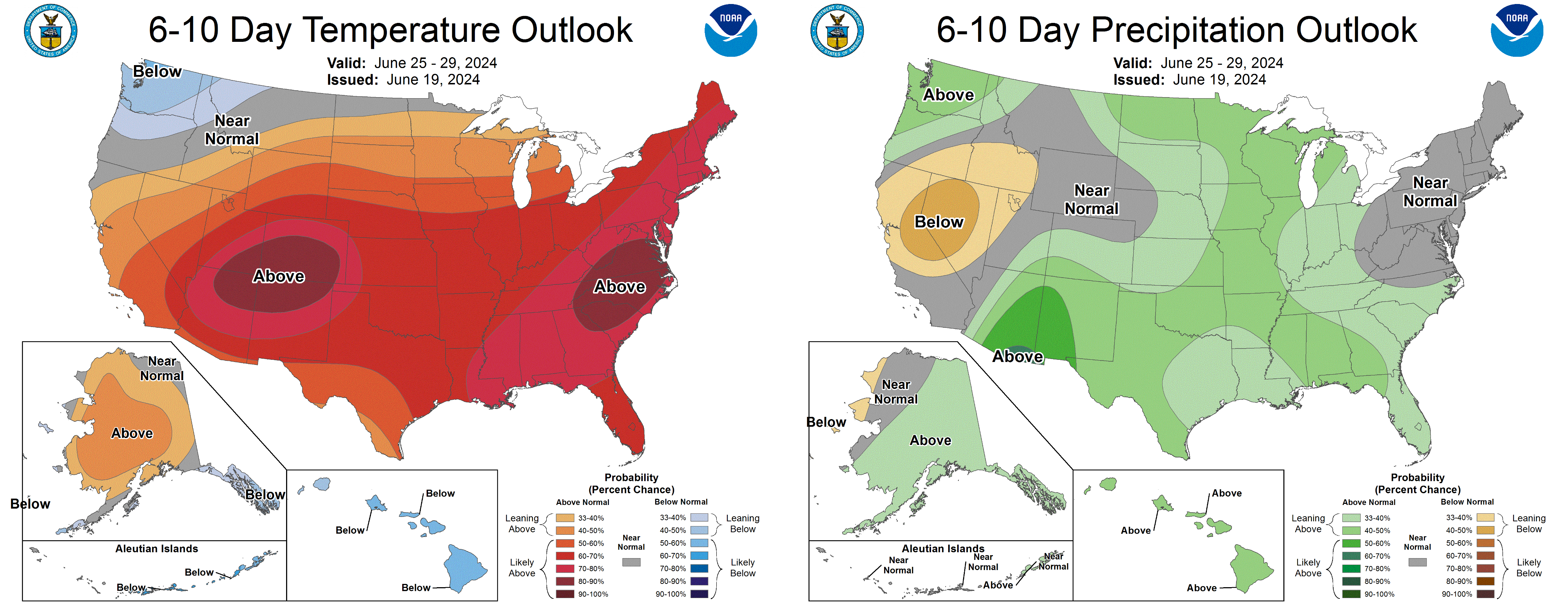Michigan hop crop report week of June 20, 2024
It’s been warm. Hops are ahead of schedule in most areas.

Weather review
Over the last month, most regions of Michigan have been 2 – 4 degrees warmer than average. In terms of precipitation, the Upper Peninsula and west central Michigan received above average precipitation. With higher-than-normal evapotranspiration rates, some areas of the state are dryer than normal and soil moisture levels below normal, namely a stretch from the Grand Rapids, Michigan, region to Saginaw Bay. We’ve experienced very warm temperatures over the last few days with heat advisories in effect across much of southern Michigan.

In terms of growing degree-day (GDD) accumulation (base 50 degrees Fahrenheit) from March 1, most areas of the state are still several days ahead of average.

Looking ahead
Medium range guidance suggests warmer than normal temperatures and precipitation through the end of June.

The extended forecast outlook for July, which was released June 20, suggests higher than normal temperatures and below average precipitation.

See the most recent Michigan State University agriculture weather forecast.
Stage of production/physiology
Hops across Michigan are in Principal Growth Stage 1: Leaf Development, Growth Stage 2: Formation of Side Shoots, 3: Elongation of Bines, and potentially Growth Stage 4: Inflorescence emergence depending upon growing location.

In the field
Across Michigan, hops are anywhere from 6 to 18 feet depending on growing location and cultivar. Growers are actively fertilizing, irrigating and applying plant protection products for disease control. Plant growth is about a week ahead of normal in most growing locations.

For pest information, please see the Michigan hop pest report for June 20, 2024.
Sincere thanks to the Michigan hop producers who provided timely input for the Michigan Hop Crop Report.
Stay connected!
For more information on hop production practices, please sign up for the hop MSU Extension Newsletter, the FREE MSU Hop Chat Series and continue to visit Michigan State University Extension’s Hops webpage or the MSU Hops News Facebook.
If you are unsure of what is causing symptoms in the field, you can submit a sample to MSU Plant & Pest Diagnostics. Visit the webpage for specific information about how to collect, package, ship and image plant samples for diagnosis. If you have any doubt about what or how to collect a good sample, please contact the lab at 517-432-0988 or pestid@msu.edu.
Become a licensed pesticide applicator
All growers utilizing pesticide can benefit from getting their license, even if not legally required. Understanding pesticides and the associated regulations can help growers protect themselves, others, and the environment. Michigan pesticide applicator licenses are administered by the Michigan Department of Agriculture and Rural Development. You can read all about the process by visiting the Pesticide FAQ webpage. Michigan State University offers a number of resources to assist people pursuing their license, including an online study/continuing ed course and study manuals.
This work is supported by the Crop Protection and Pest Management Program [grant no 2021- 70006-35450] from the USDA National Institute of Food and Agriculture and the North Central IPM Center. Any opinions, findings, conclusions or recommendations expressed in this publication are those of the author(s) and do not necessarily reflect the view of the U.S. Department of Agriculture.



 Print
Print Email
Email
